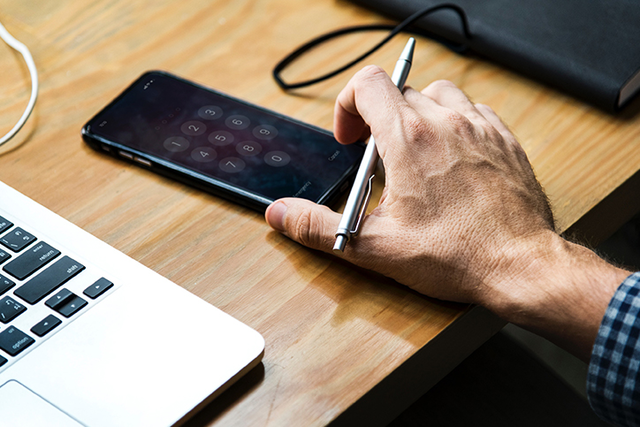Did you know that the average worker spends almost two and a half hours reading and replying to emails each day? As a funeral director, your day is already as busy as it gets. And those hours spent reading and replying to emails could be better spent elsewhere.
To help cut through the clutter, we’ve put together some tips on organizing (and protecting) your inbox.
Organization Tips
To keep organized and on top of your email, here are some strategies to keep in mind.
Set aside a specific time. It could be first thing in the morning or closer to the end of the day. Either way, pick out a specific time and commit to reading and responding to all your emails each day.
Take advantage of labels, folders, and categories. Most email programs — such as Outlook and Gmail — have convenient labeling features. This helps automatically sort emails by category or urgency. As Entrepreneuer.com notes, “the better your filing system, the easier it will be to locate specific emails when you need them. Create parent categories for broad subjects such as the following: clients, projects and finances.”
Check out this article for tips on creating labels, folders, and tabs in your inbox. Fast Company offers another good piece of advice. Instead of creating labels based on the email’s subject, consider creating labels based on deadlines. For example, they suggest creating categories such as:
- Today: Everything that needs to be responded to by today.
- This week: Emails that need a response by the end of the week.
- This month/quarter: Emails that require a response later on and aren’t as urgent.
Unsubscribe from unproductive emails. If you get a flood of promotional emails and advertisements, consider unsubscribing from them. Most promotional emails have the option to unsubscribe down at the very bottom of the email. By clicking the link, you’ll be taken to a page where you can choose to unsubscribe or change how frequently you want to receive the email (daily, weekly, monthly, etc.). You can always re-subscribe to their email list later if you change your mind. If you are subscribed to emails that help you personally or professionally, keep those around and perhaps add them to a folder to read later or on the weekends.
There also are programs that help you unsubscribe from promotional emails and clean up your inbox. Some popular ones include Unsubscriber, Unroll.me, and Unlistr.
Finally, you want to be careful with unsubscribing versus marking something as spam. That’s because when you mark something as spam, your inbox will put the emails from that sender into the spam folder. But this means you could potentially miss important emails and announcements from the sender. Unsubscribing is typically a better option because it will only take you off the mailing list for newsletters and promotional emails, meaning you are less likely to accidentally miss out on the important emails.
Safety Tips
Besides staying organized and on top of your inbox, safety is another big issue with email. According to the Small Business Administration, since 2016, more than 4,000 ransomware attacks have occurred daily. Many of these attacks appear in the form of phishing emails. A phishing email is a form of a cyber attack where a hacker attempts to obtain sensitive business data or personal information from an email.
Here are some tips for identifying phishing email scams.
- Train all your employees to identify phishing emails. According to Small Business Trends, 97% of employees are unable to identify a phishing email.
- Don’t trust the email display name. The display name is different than the sender’s email. For example, this newsletter’s display name is BostonGlobe.com, but the actual email that’s sending it is newsletters@email.bostonglobe.com. Phishing emails will typically try and use a display name that’s similar to a recognizable brand, so make sure to always check the email that the message is coming from.
- Check for spelling/grammar mistakes. Major brands and companies have proofreaders, and typos and spelling errors aren’t common. Mistakes in the email could be a sign of a suspicious email.
- Don’t send personal information. Major companies won’t ask for any personal information or credentials over email.
- Don’t click on attachments or links unless you are positive of what they are. Phishing emails often include malicious programs in email attachments or links as a way to gain access to your personal information.
For more tips and examples of common phishing emails, check out the Small Business Trends’ article 10 Phishing Examples in 2017 that Targeted Small Business.






0 Comments